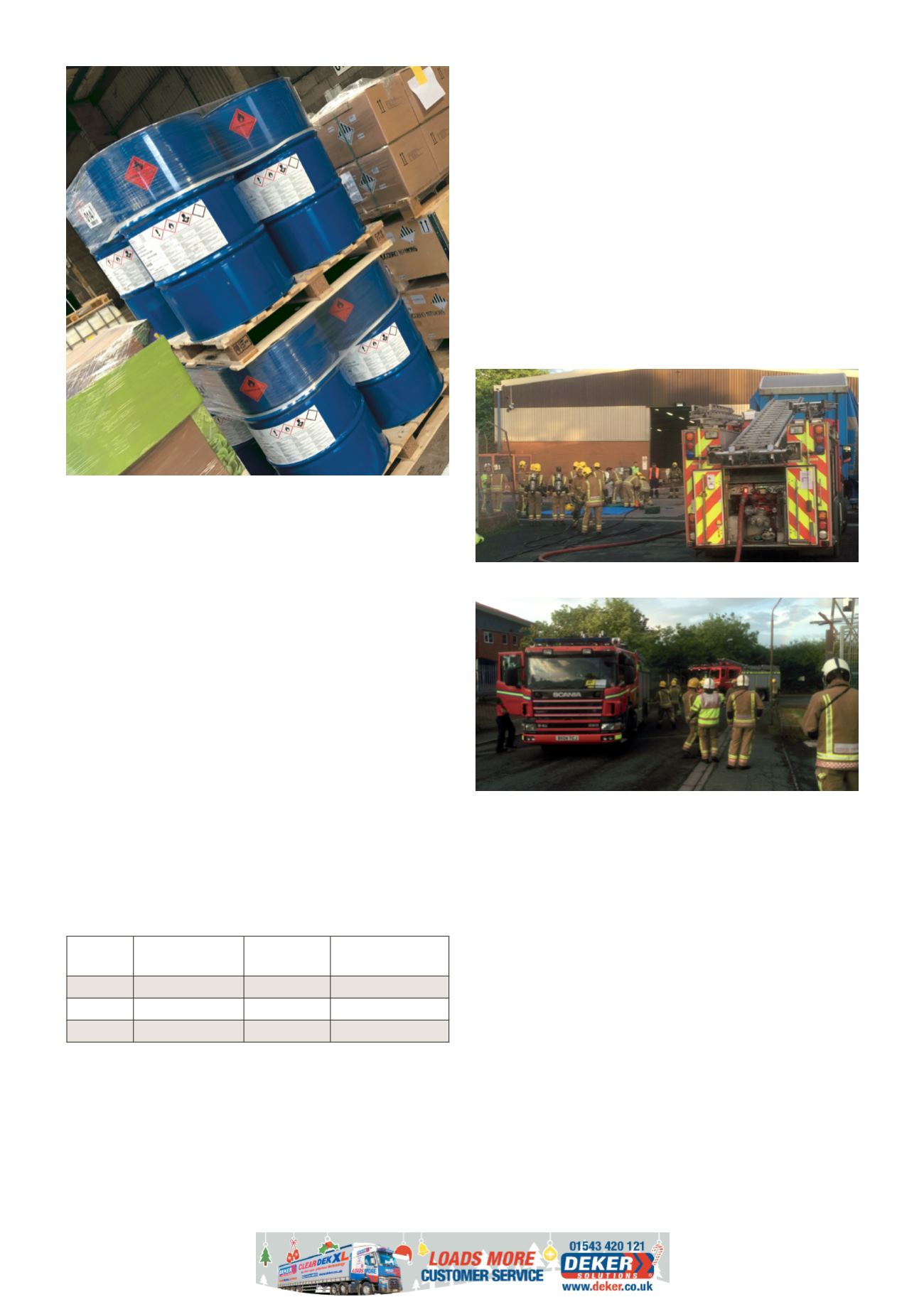
 www.truckandtrack.com
www.truckandtrack.com
Winter 2018
Truck and Track
63
DANGEROUS GOODS
will keep burning after the ignition source is removed]
Autoignition Point
[the temperature that results in spontaneous
autoignition]
The fire point is higher than the flash point, because at the flash
point, more vapor may not be produced rapidly enough to sustain
combustion. Neither flash point nor fire point depends directly on
the ignition source temperature, but ignition source temperature is
far higher than either the flash or fire point.
As a young chemist working in the petroleum industry, I often
measured Flash Points of liquids [with ASTM / IP methods by
Pensky-Martens apparatus] as it is a key metric in the classification
of flammable liquids. Once classified as either non-flammable, low
flash or high flash in terms of flammability, we can then risk assess
the activity, in order to determine a safe system of work [SSoW] for
storage / carriage [logistics].
But we also have to determine the extent of the flammability of the
volatile liquid.
A flammable liquid is a volatile fluid that has a flash point at
ambient [or at a lower] temperature; but one that does not
exceed 60°C
[at atmospheric pressure].
To determine the level of risk in terms of relative flammability
of Class 3, we use transport category / packing groups [to further
subdivide Class 3]
Packing
Group
Flash Point
Initial Boiling
Point
Refined Petroleum
Fraction
I
<-40°C
<=35°C
Petrol / Gasoline
II
<23°C
>35°C
Jet AI / Kerosene
III
>=23°C, <=60°C
>35°C
Diesel / Derv
In terms of refined petroleum from distillation, we see that Petrol /
Gasoline is PG I as it is the most flammable [and therefore the most
problematical in a release or leakage situation], while Diesel / Derv
is of a lower hazard, due to its higher initial boiling point and higher
flash point. While Jet Fuel [aka Jet A1] which is within the Kerosene
fraction, resides between the two ‘cuts’ [Gasoline to Diesel].
In practical terms, a spillage of Petrol [aka Gasoline / Motor Spirit]
is far, far more worrying than a spillage of Diesel in terms of risk of
catching fire / ignition from a spark or heat due to the higher Flash
Point of PG III. Even in Siberia, a spillage of Petrol poses a risk of fire,
even on Ice, while a Diesel spillage in sub-zero temperatures forms
a petroleum jelly / wax, one that will not ‘flash’.
So with Fuels, Solvents, Oils, Surface Coatings Products [including
Paints, Varnishes, Adhesives], Cleaning Products, Alcohols, Ethers,
Lacquers et al derived from Petroleum refining, we can understand
why Class 3makes up such as large proportion of Dangerous Goods
on our roads, close to half of all ADR products.
BecauseofClass3,andthepreponderanceofflammableliquidsthat
form part of our society, we have to have a robust Fire and Rescue
Service on standby at all times, and why Fire Risk Assessments are
mandatory for all industrial organisations, and why many general
logistics companies [including parcel carriers] are now refusing to
carry Class 3, as it falls under ADR regulations, as they realise the
problems posed, including insurance and staff welfare.
If you still
‘black-wrap’
Class 3, in order to ‘limbo dance’ under the
ADR regulations then you are unethical, as you place the lives of
others at risk and pleading ignorance in no excuse.
If you require Technical Support, Interim Management,
TechnicalWriting,LogisticsAssistance,orhelpwithChemistry
or Chemical Issues, please feel free to contact me.
Ali S KarimBSc FRSC CChem FCILT FEI CSci
Technical Consultant
Tel: 07812 584 249 / 01270 610855
Email:
akarim1462@aol.comLinkedin: linkedin.com/in/ali-karim-37756311
Complementary Technical Advice on the Dangerous Goods
Supply Chain
AliKarim’sLinkedinpagecontainsseveralarchivedtechnicalarticles
and papers. They are provided free to download, as Ali Karimretains
copyright. The information contained within these articles are
provided in good faith. Ali Karim cannot accept any responsibility
for the application or veracity of the advice contained, or for any
omissions.
If you need assistance with the Logistics of Class 3
[Flammable Liquids] or other Classes of Packaged Dangerous
Goods, please feel free to contact Hazchem Network’s
Nada Marinovic on mobile 07712 662 431 or email
nada@hazmail.co.uk. For more general information, go to
www.hazchemnetwork.co.uk and
www.hers-info.co.uk.© 2018 A S Karim
Warwickshire FRS at Hazchem drill
Flammable drums class 3
Warwickshire FRS



















